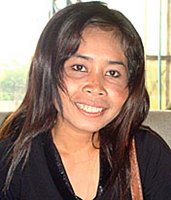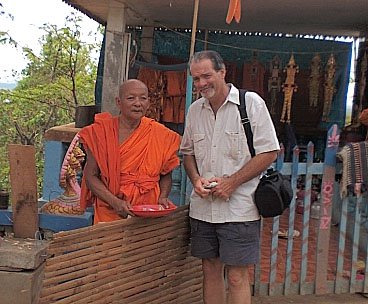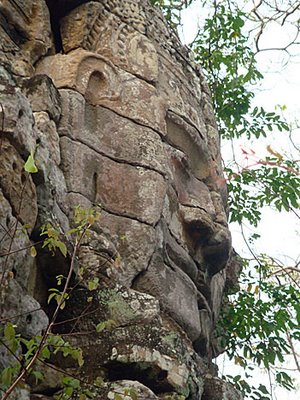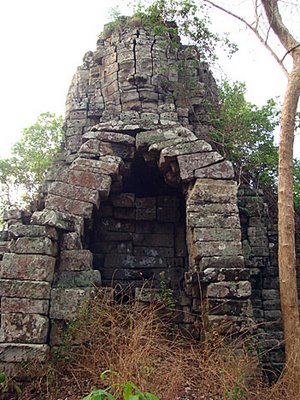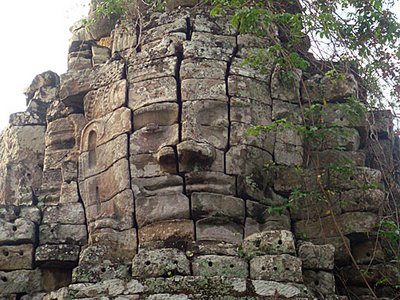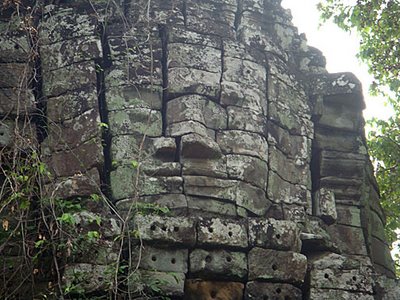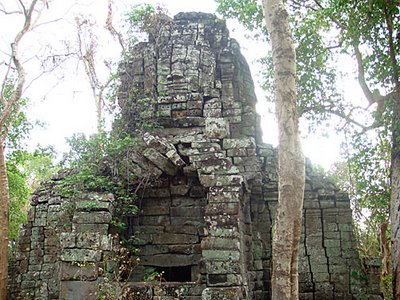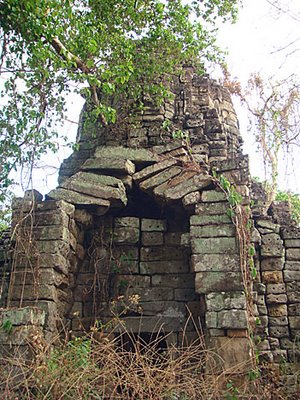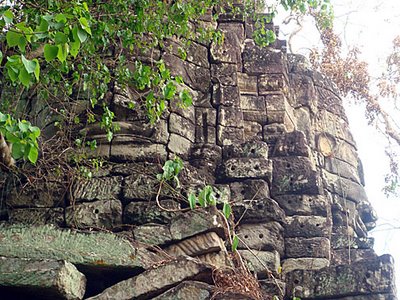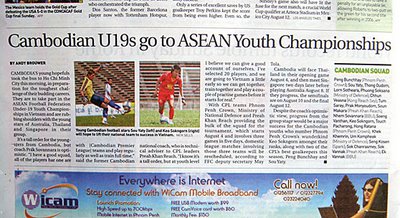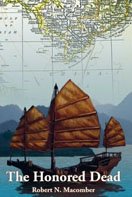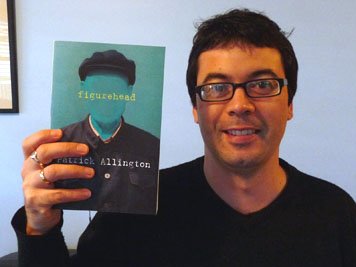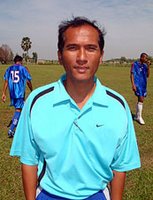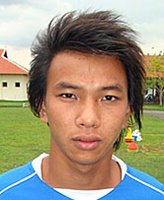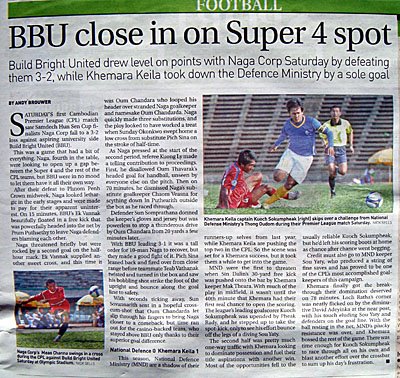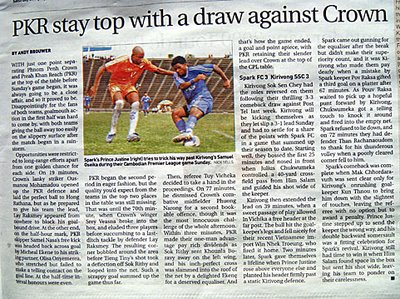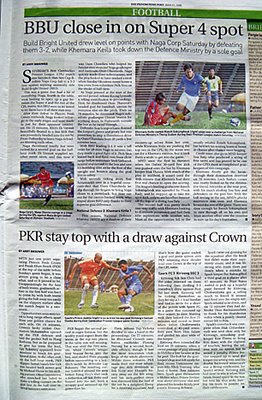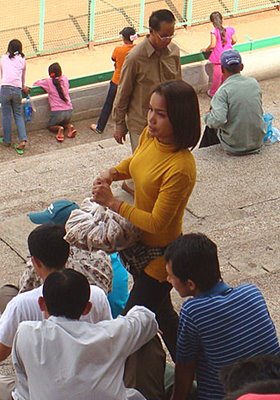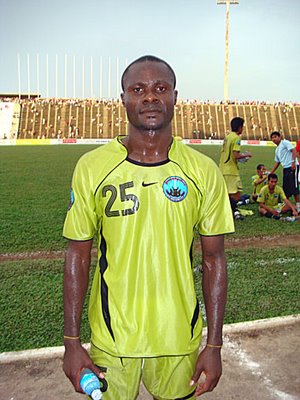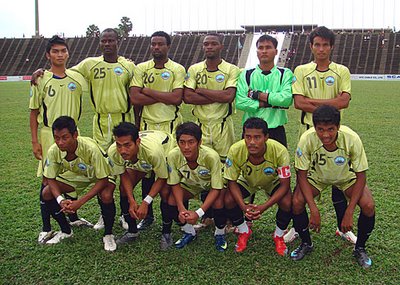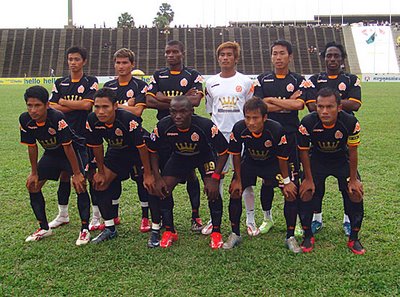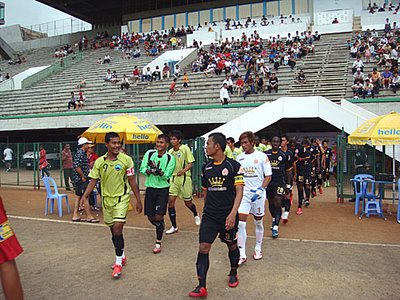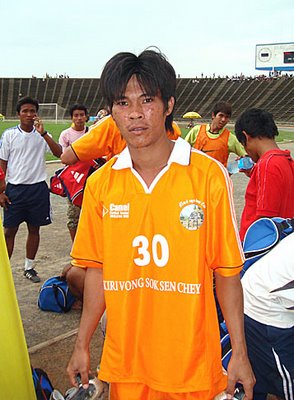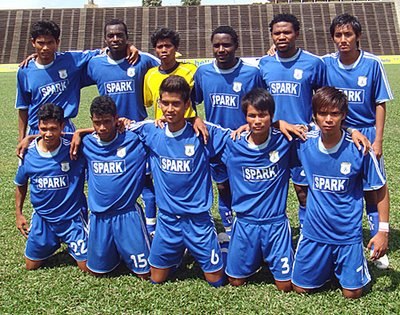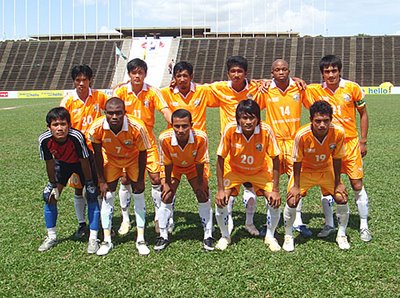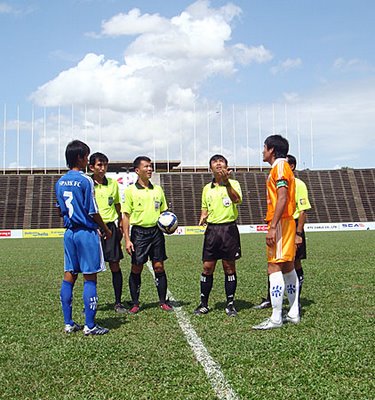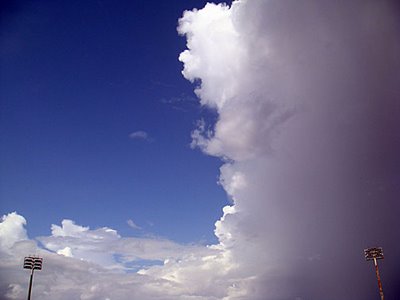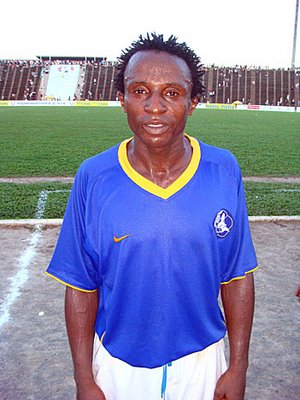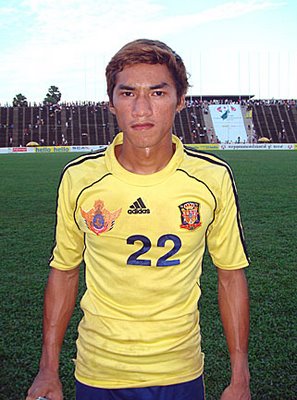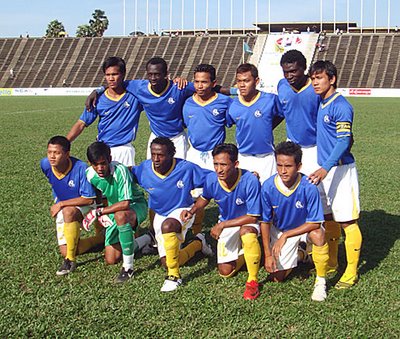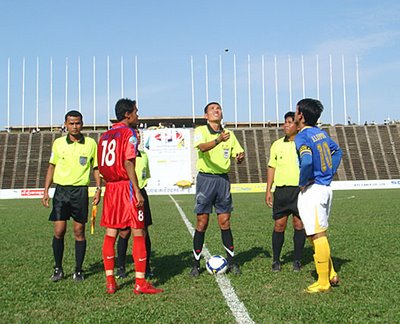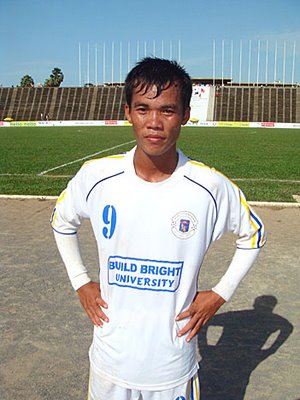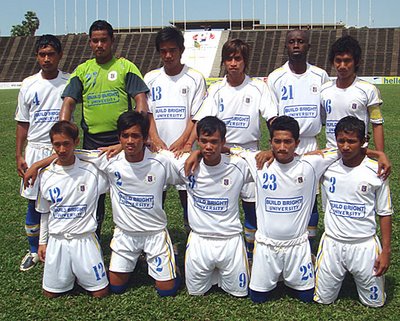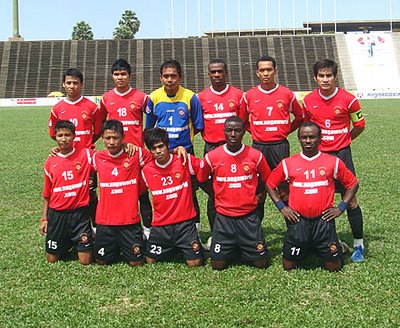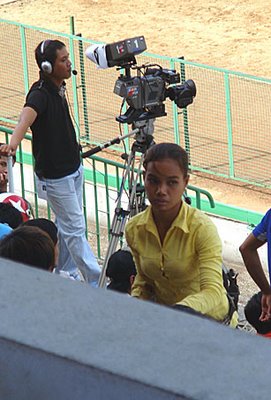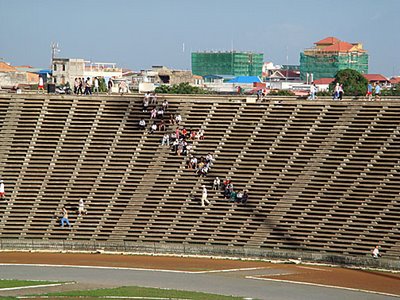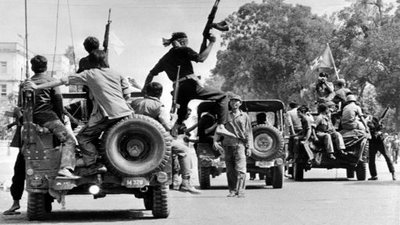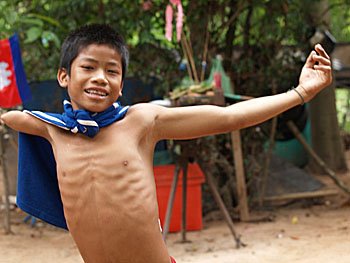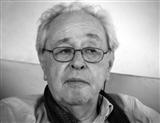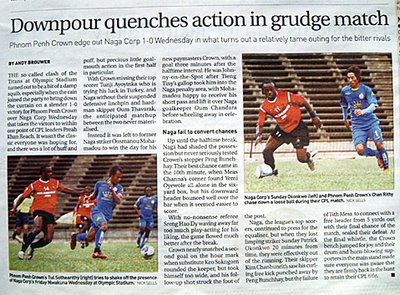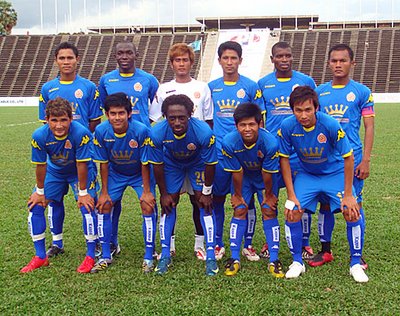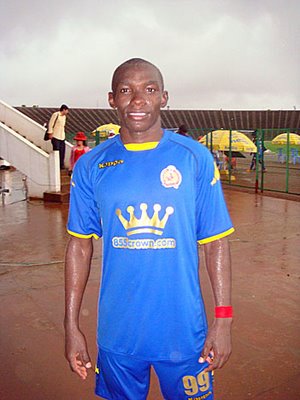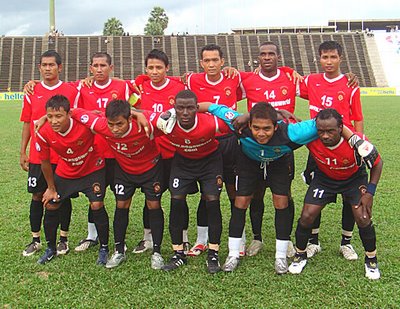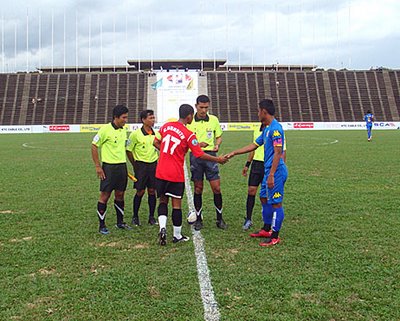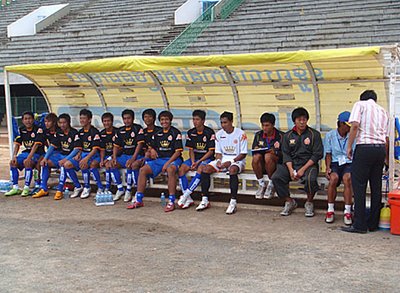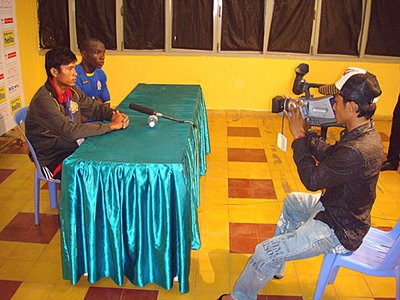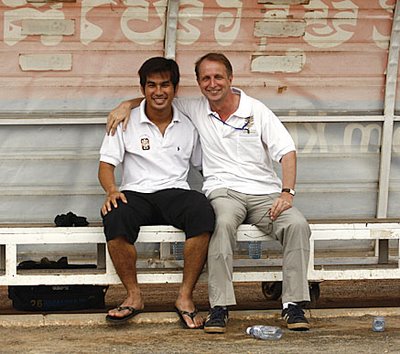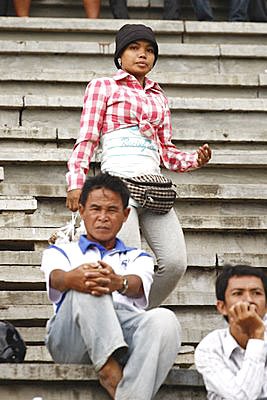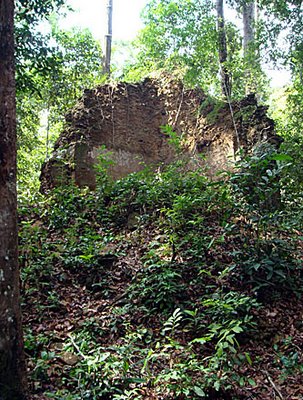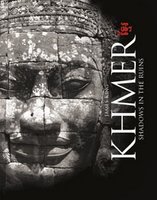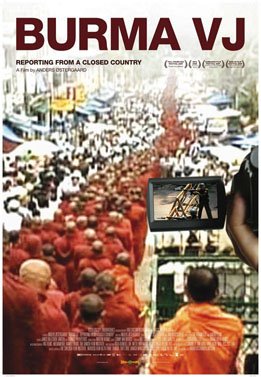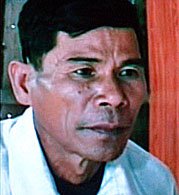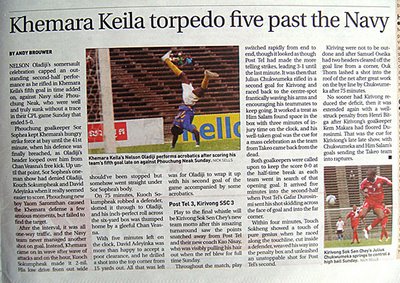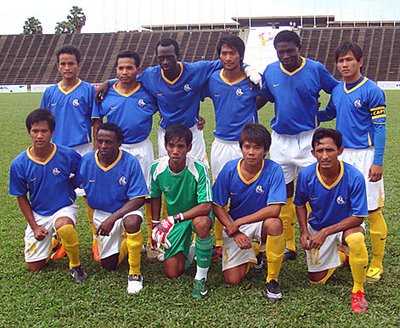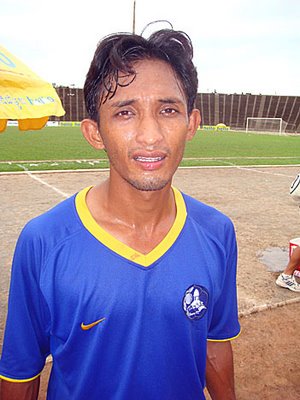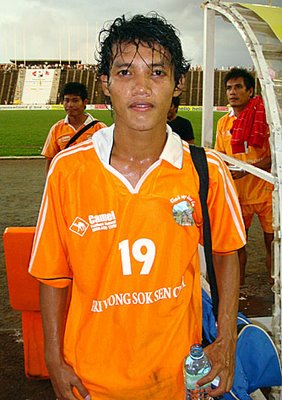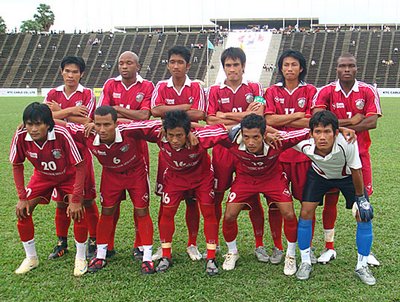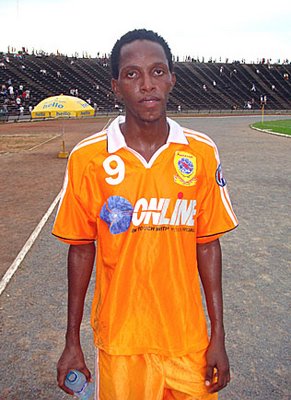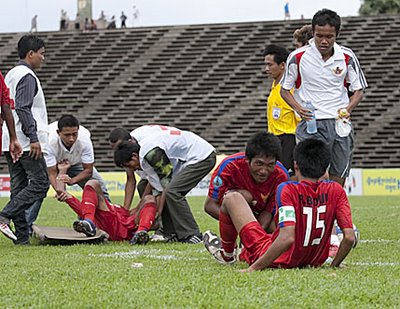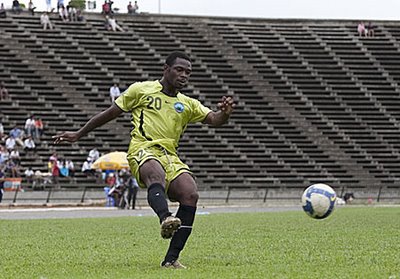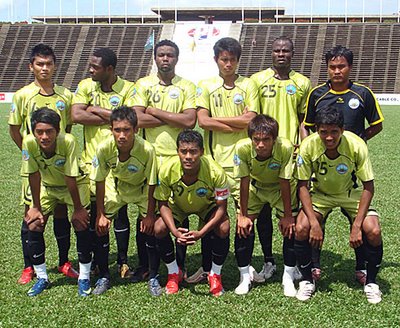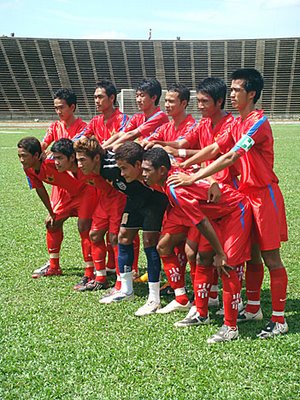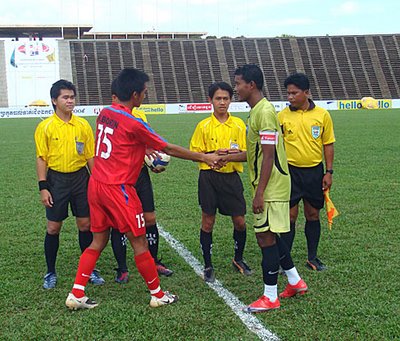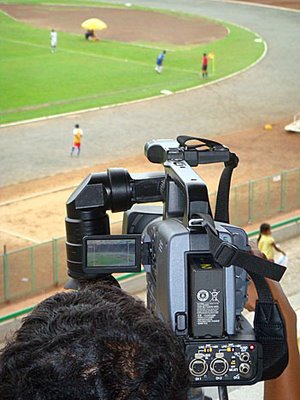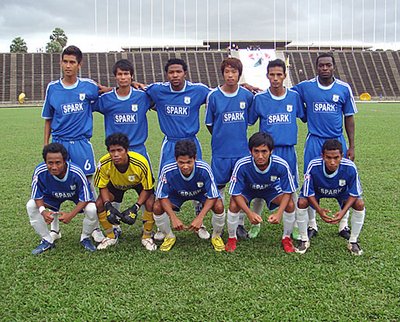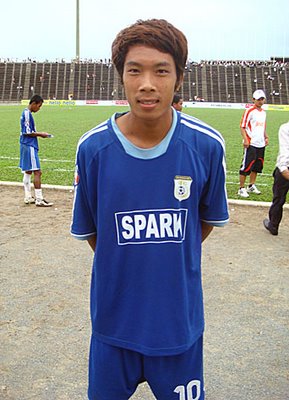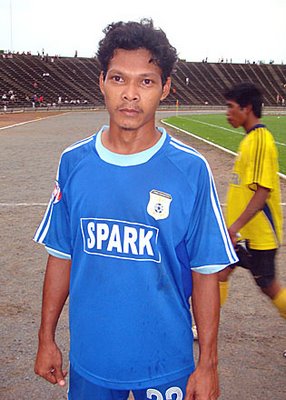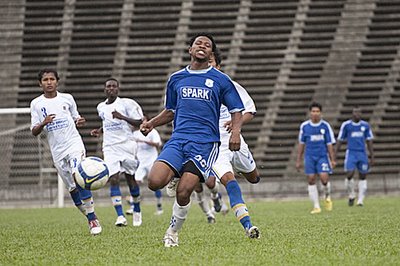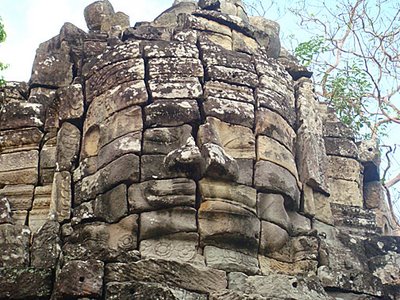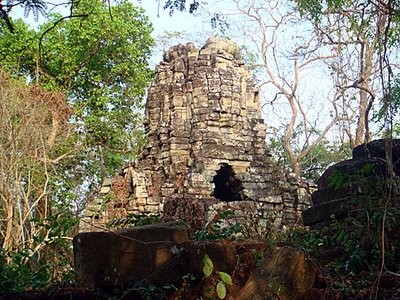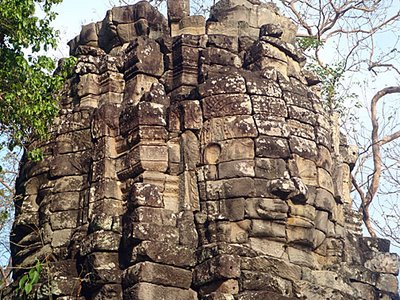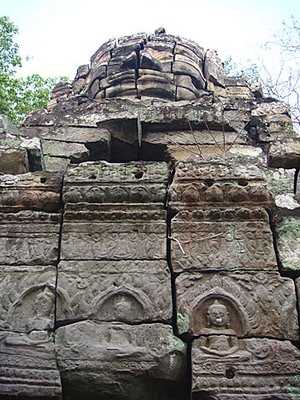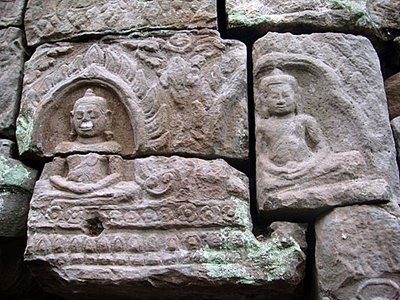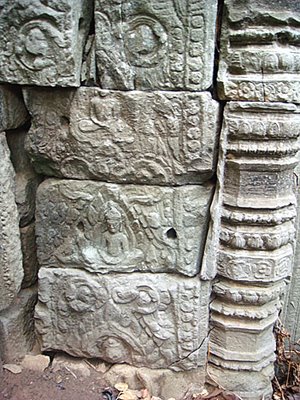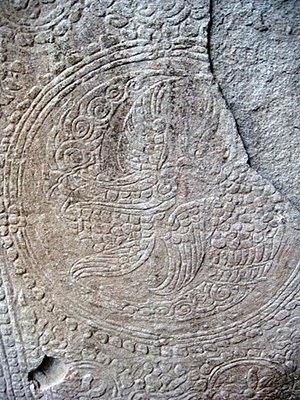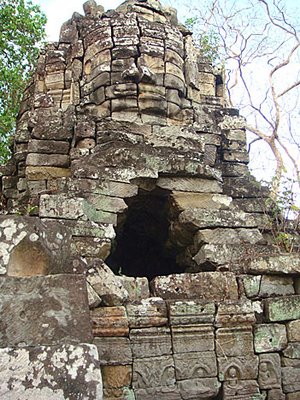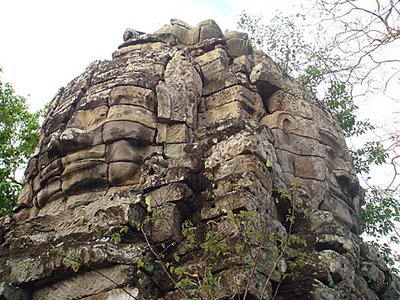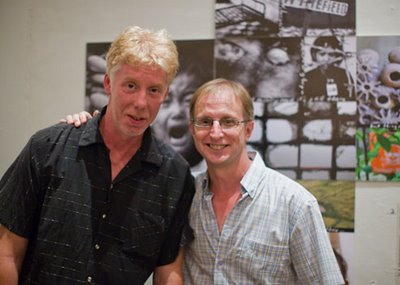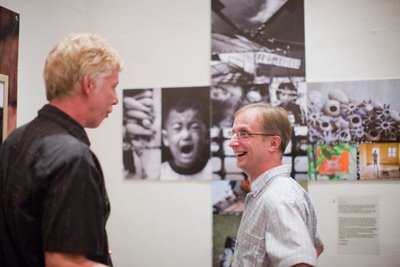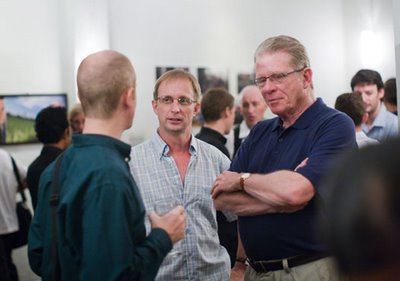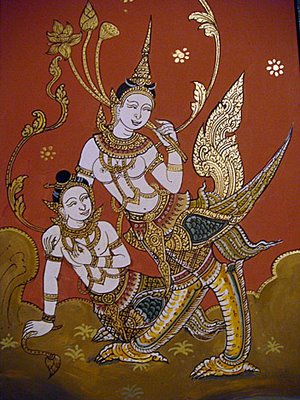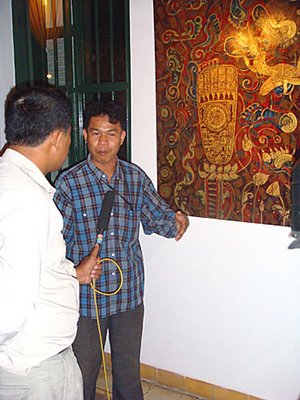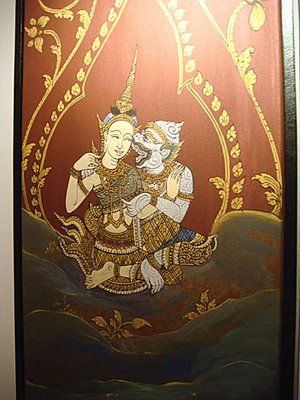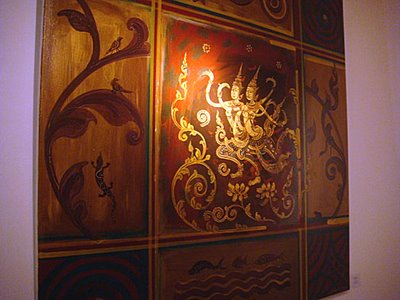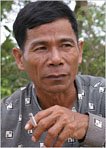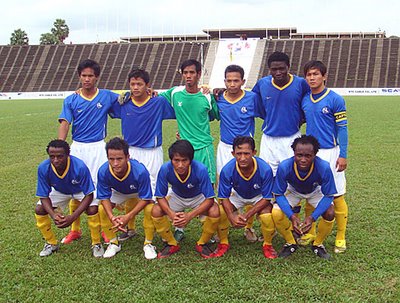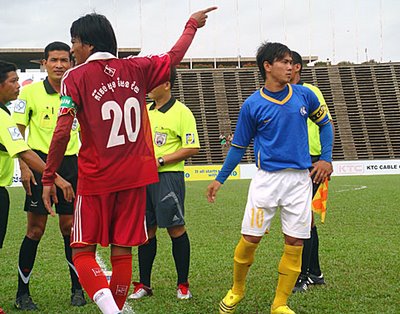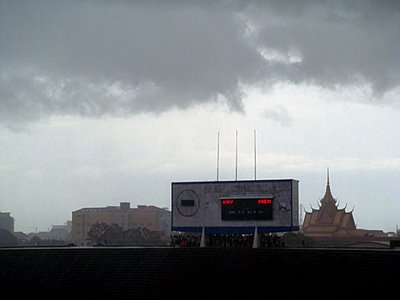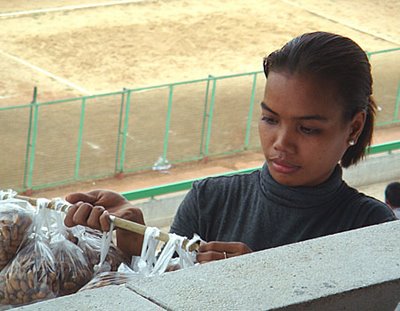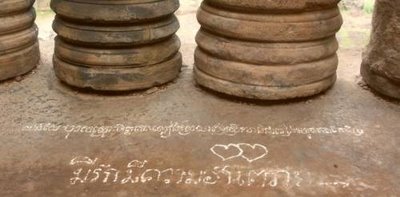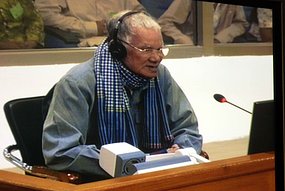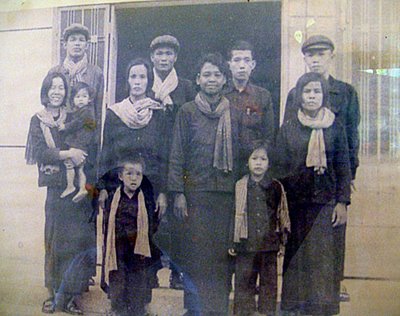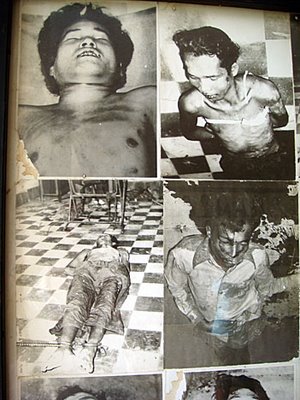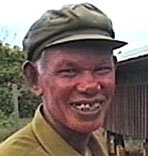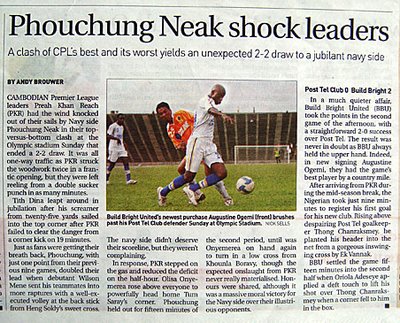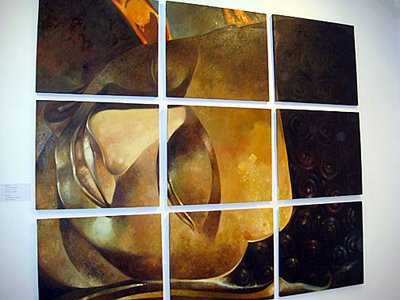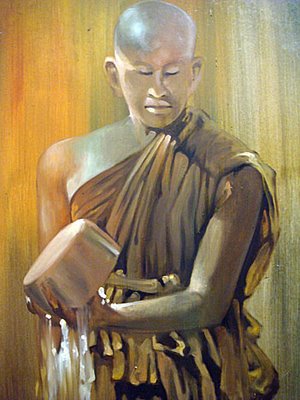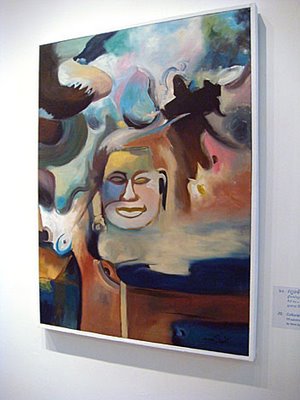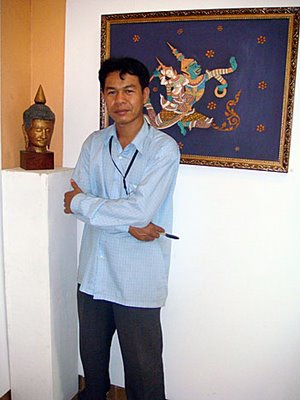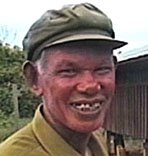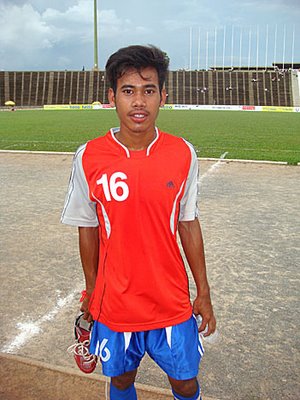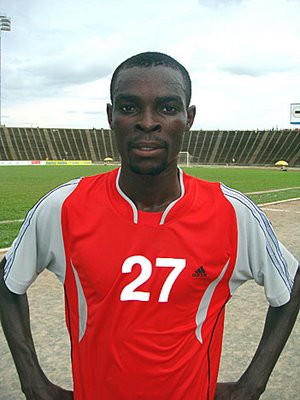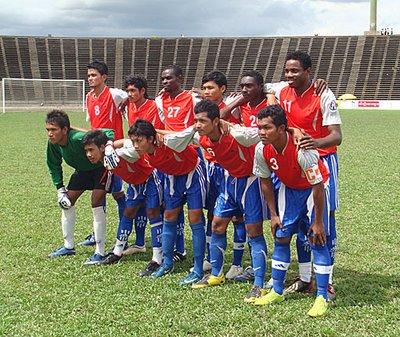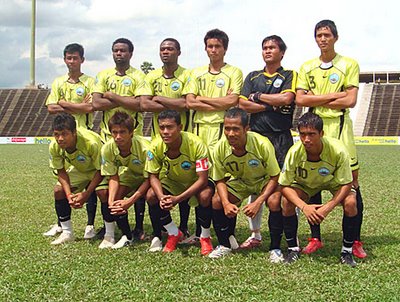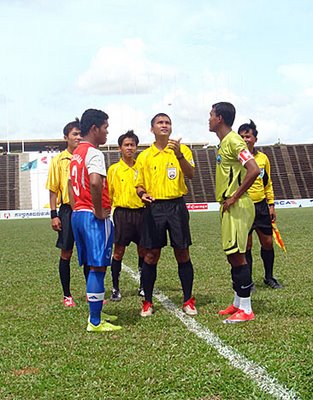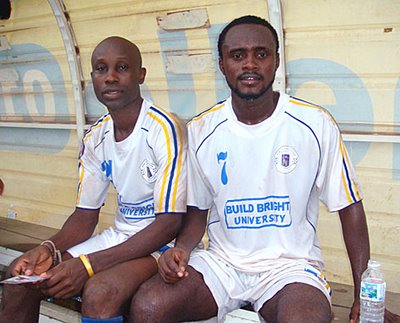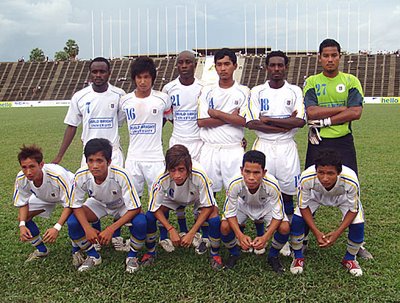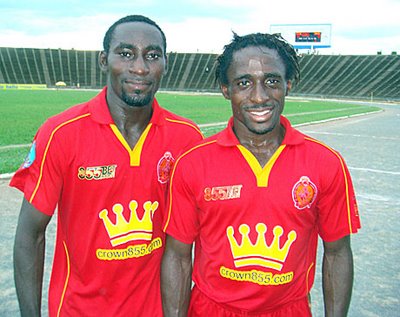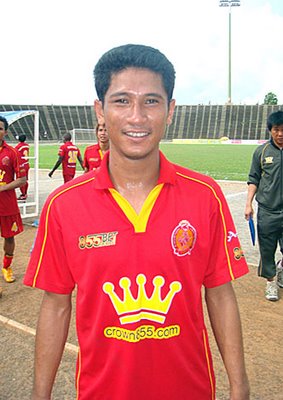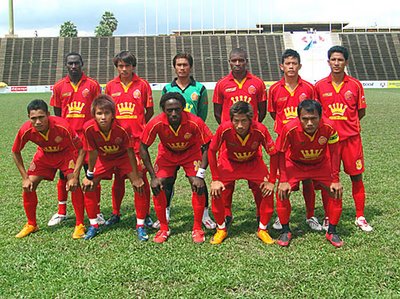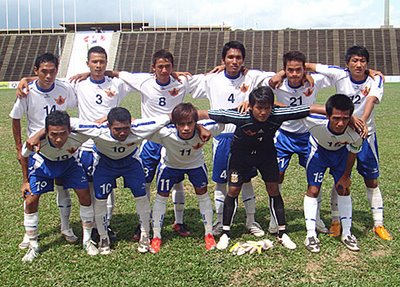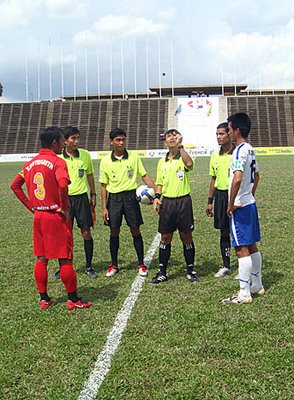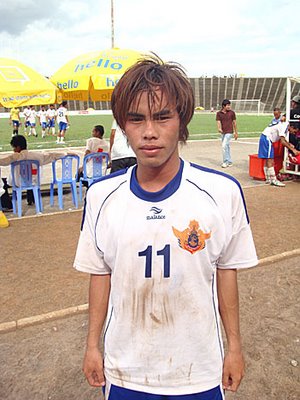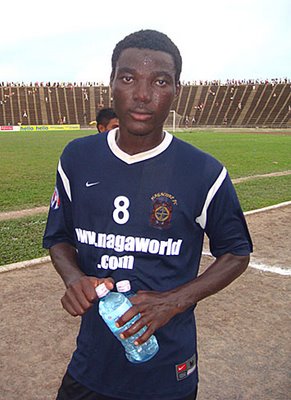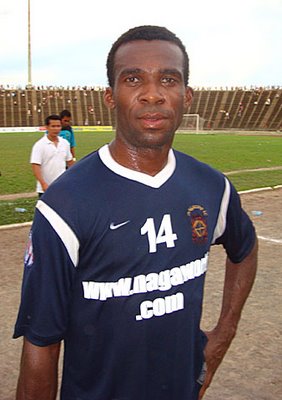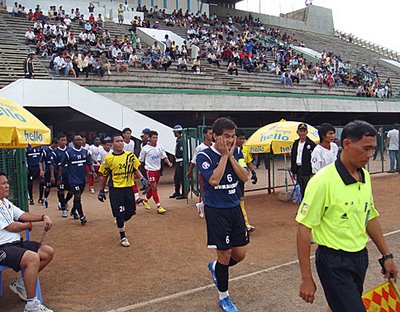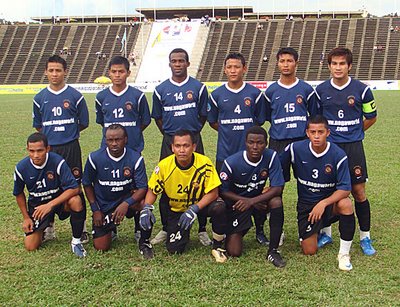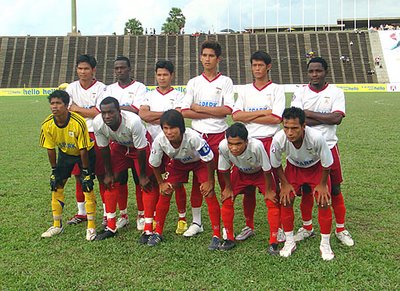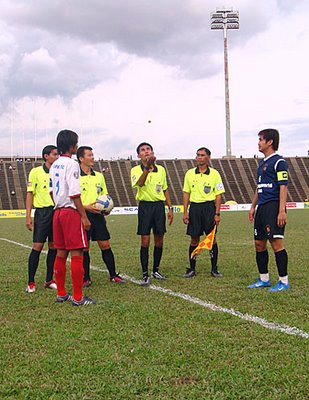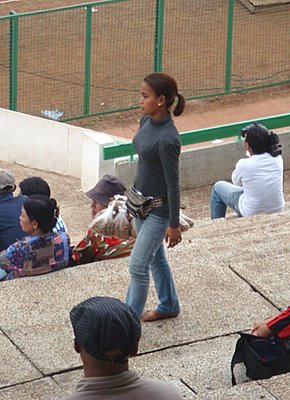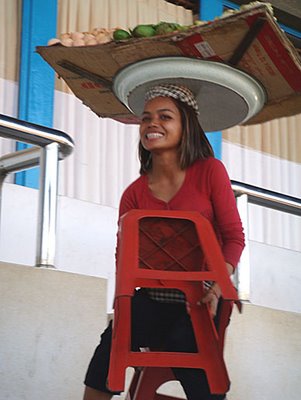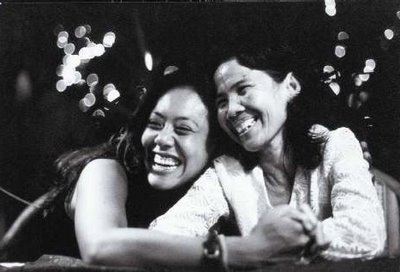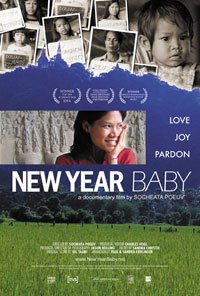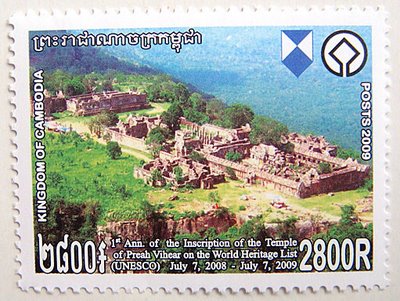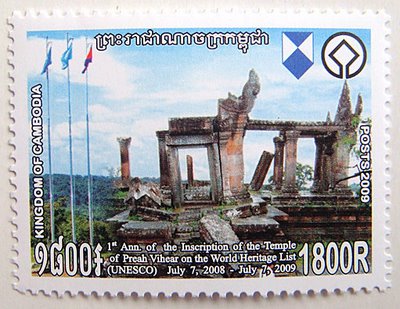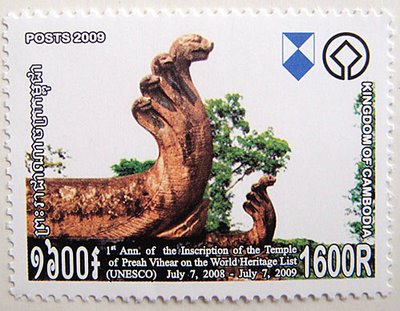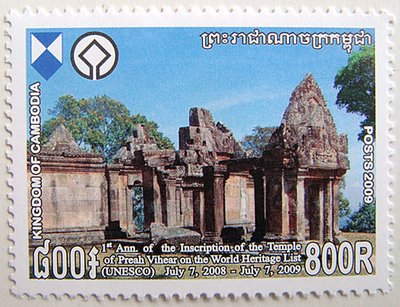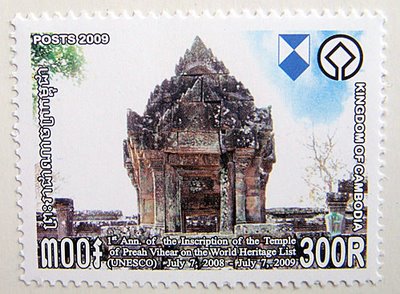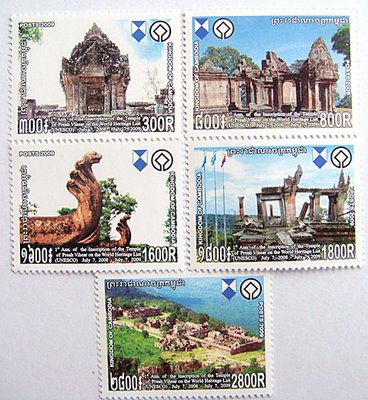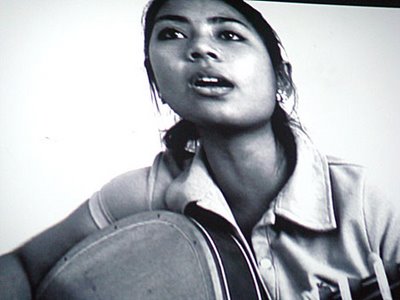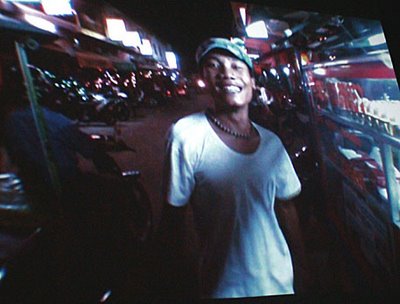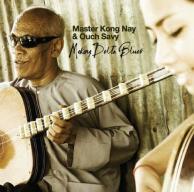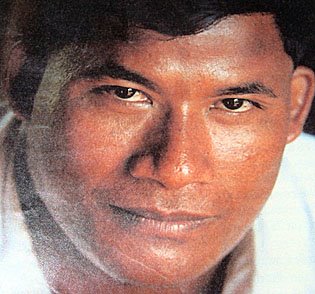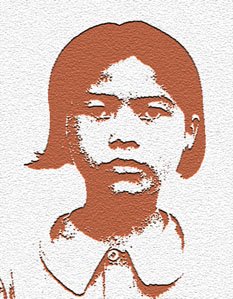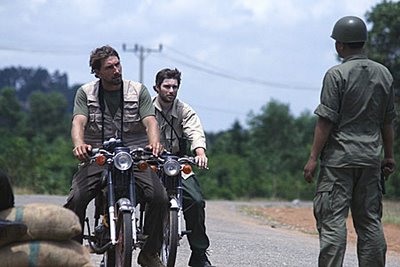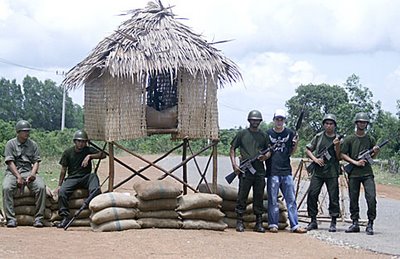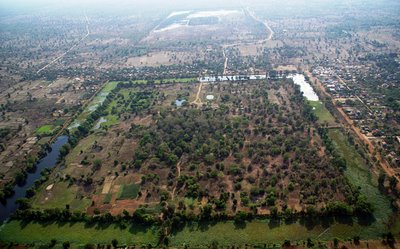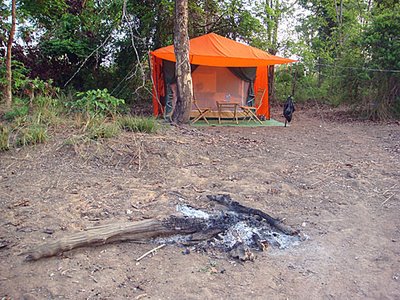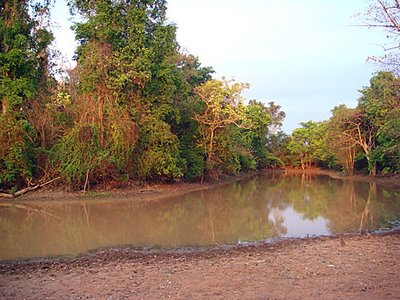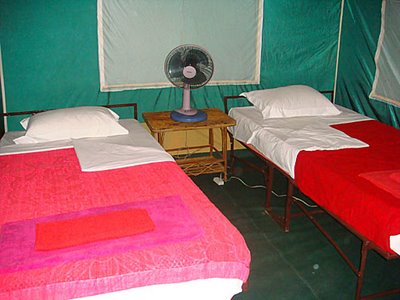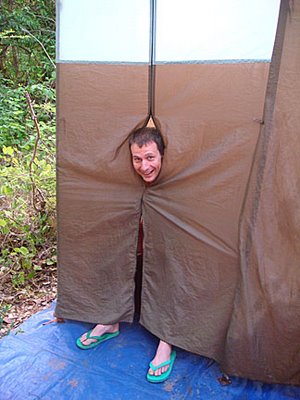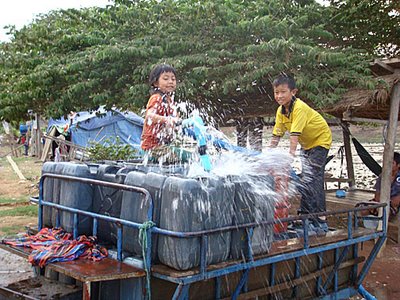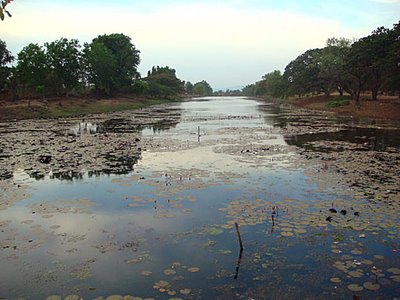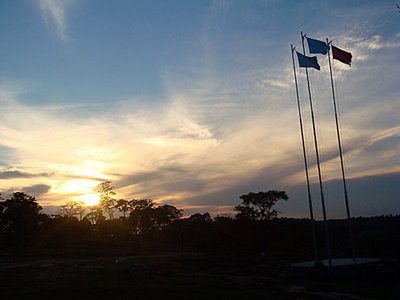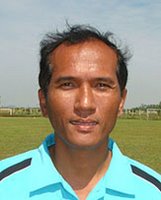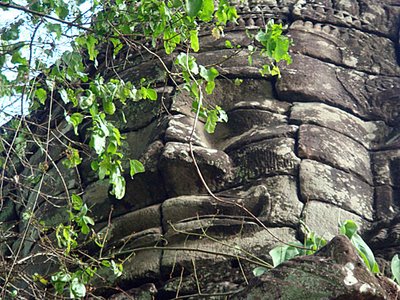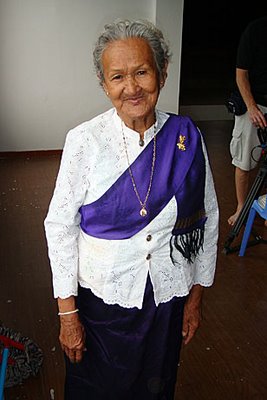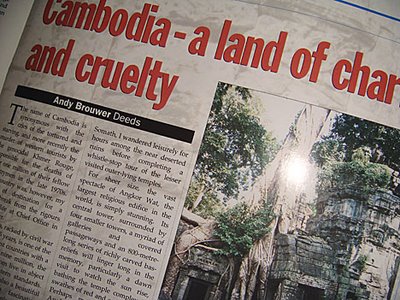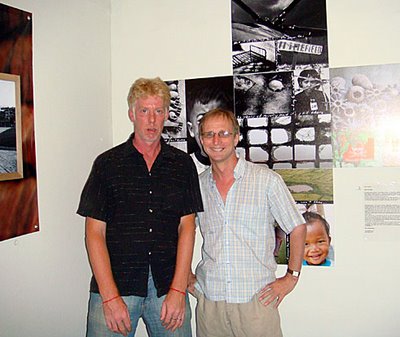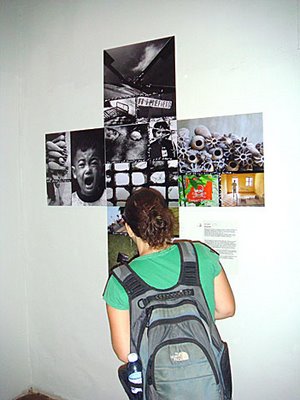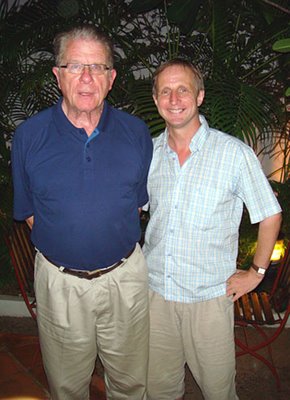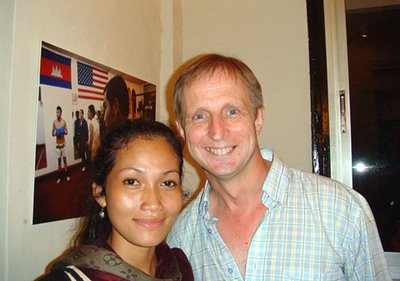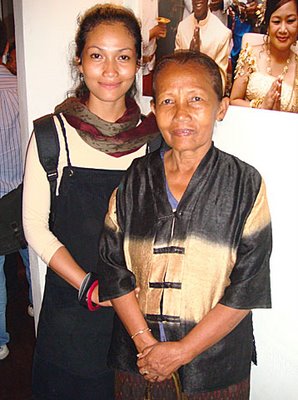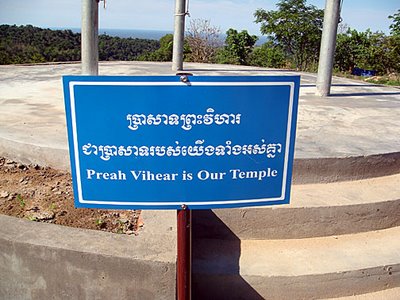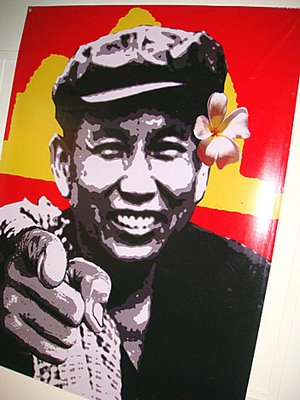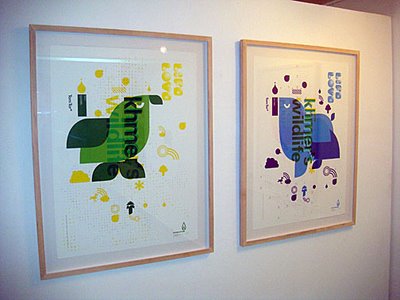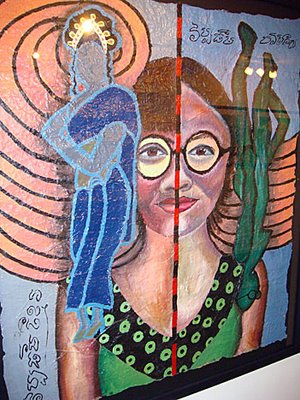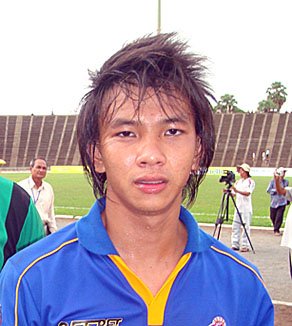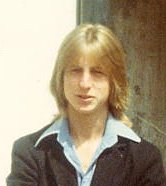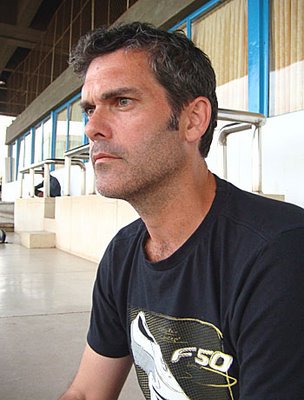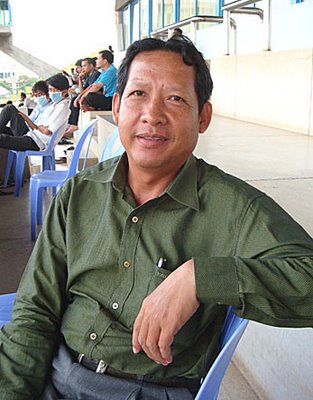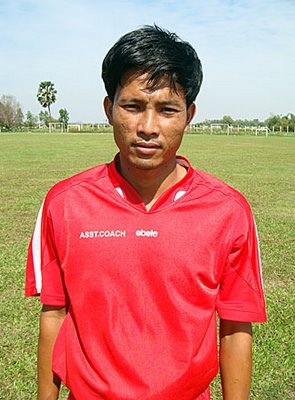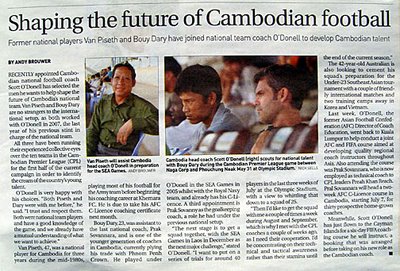 Professor David Chandler
Professor David Chandler
If you read my blog, you'll know that Professor
David Chandler is in town for a few days. And he's here to lend his weight behind the new textbook from DC-Cam that teachers will use to bring the Khmer Rouge period into the school curriculum for the first time. The paper below was presented to teachers last week and is well worth posting here as we'll all learn something from it.
Chandler's potted history
Most people, especially foreigners, think of Cambodian history only in terms of Angkor and modern times, or more specifically Angkor and the Khmer Rouge period. As I hope to show in my brief talk, Cambodia has much more history than that. I will be suggesting to you that all of Cambodian history, from the earliest times right up to 2009, is rich, interesting and continuous. You are all the heirs of an extraordinarily long, vibrant and fascinating past, and you can all be very proud of it. Basically, for my short talk I would divide this enormous stretch of time - from the beginning of Cambodian history until 1953, when the country gained its independence fro France - into four periods. Each of these can be seen in terms of a major theme or two.
1. Prehistories, Funan and Chenla. Theme: Indianization. Dates: 5000 BCE-800 CE
2. Angkor . Themes: Imperial Power, Urbanism and Ordinary People, Dates: c. 800 c.1450
3. Middle Period. Themes: Transformation, Isolation and Outside Pressures c, 1450 -1863
4. Colonial Era. Theme: Theme: Cambodia Enters the Wider World 1863 - 1953.
Prehistory, Funan and Chenla
We have evidence of cave dwellers in northwestern Cambodia living as long ago as 5000 BCE. They were Stone Age people, and several other very early sites have now been excavated. By 1000 BCE people living near present day Kompong Chhnang were casting bronze (lovely specimens of their work can be found in the National Museum). Their tools and ornaments and weapons resembled those found in Bronze Age sites in northeastern Thailand. This doesn’t mean that the early Cambodians were "Thais". You have to remember that there were no national borders in Southeast Asia until the colonial era, and also that the people of what is now northeastern Thailand in those far-off days probably spoke Khmer, or a related language. These people were growing rice and eating fish, so the mainstays of the Cambodian rural diet in 2009, were the mainstays in the country in 1000 BC. This is one of the much continuity in Cambodian history.
The phenomenon we call Indianization, which I have chosen as the major them for this period, really only begins to be recorded in the early years of the Christian era, when Indian jewelries and tools have been found at a coastal site associated by scholars with what the Chinese called the kingdom of Funan. Funan was an important trading kingdom, and the fact that it had an extensive network of canals suggests that it was able to mobilize a large labor force when needed. Unfortunately, no local written records survive from Funan. Information about it comes from archaeological digs and Chinese sources, assembled over several hundred years. The latter are useful because, without saying so, they trace the growing complexity if Funan as its rulers selected linguistic, cultural and administrative elements from India in the complex and rewarding process that we call Indianization.
Indianization was not colonization, but rather consisted of a series of choices made by local elites when they encountered Indian culture, either in India as pilgrims or via trade or in Cambodia (Funan) via Indian traders, bureaucrats and priests. The process took place in unrecorded form between over 500 BCE and 500 CE, more or less. It happened because of trade relations with Cambodia selling exotic forest products and Indians trading these for manufactured goods, especially textiles. The most enduring aspects of Indian culture that were accepted by the Khmer were its gods (and some of these were more popular than others) and its ideas of governance. The Khmer never adopted the caste system that prevailed in India. When Khmer became a written language in about 300 AD, Indian characters were adapted for its alphabet. Indianization was not the first time, or the last, when the blending and adaptation of cultural elements from outside Cambodia helped to form the ongoing cultural history of the country. A key point is that Indianization was not an imposition of control, or colonization, as was the case with China and northern Vietnam.
In the 4th and 5th centuries CE, Cambodia 's political center of gravity shifted inland from the coastal area of "Funan" into south central Cambodia, with a city located at what is now the village of Angkor Borei. "Chenla" was the name given this successor kingdom by the Chinese. The capital of Chenla was probably Isanapura, or Sambor Prey Kuk in Kompong Thom. During these years the first inscriptions in Khmer and Sanskrit were carved on stone and started to produce a documentary record for Cambodian history and society. Michael Vickery's invaluable work on these inscriptions, which appeared in 2005, has revolutionized our knowledge of the closing years of this early period.
Angkor. Themes: Imperial Power and Ordinary People
All of you are reminded of Angkor every day, whenever you see the Cambodian flag, hear the national anthem, or notice the name of many shops. You see an echo of Angkor in the Independence monument. Many of you have probably visited it, some of you more than once. Angkor is a marvelous tourist site for over a million foreign visitors a year, but for you, as Khmer, it's also something else: a beautiful reminder of your ancestors' extraordinary achievements in the fields of art and architecture, city planning, road building and hydraulic engineering, to name only a few.
For many years, archaeology in Cambodia, dominated by the French, concentrated on the kings, temples and the inscriptions that they found at of Angkor so as to build a picture and a chronology of the empire. They named twenty-six kings, located the remains of more than a thousand temples and deciphered more than a thousand Khmer and Sanskrit inscriptions. In restoring the major temples at Angkor, the French also learned a great deal about Cambodian religion and, from the bas-reliefs of the Bayon, a certain amount about the daily lives of ordinary people. The inscriptions told scholars about royal concerns (often expressed in elegant Sanskrit poetry) and a certain amount about the administration of the empire, particularly as the administration was linked to temples erected by kings or by powerful members of the elite. They gave the temples and everything else that they learned to the world as a gift, and they gave a gift to the Cambodian people.
What was missing from French efforts was a concentration on the daily lives of ordinary people of Angkor - your ancestors: hundreds of thousands of unrecorded men and women who grew the rice, raised their families, fought the kingdom's wars and built the temples. French scholars saw Angkor as a challenge, as a collection of beautiful ruins and as a site for six hundred years of royal history. In the last fifteen years or so, several dramatic changes have occurred in relation to our thinking about Angkor and the early history of Cambodia. For one thing, digging at pre-Angkorian settlement and burial sites has revealed many complexities in ordinary life. Mapping in the Angkor region has also developed into a fine art, using satellite photography to discover Angkorian rice fields, canals and roads. They have concentrated on showing what a large and crowded city it once was - probably housing as many as 700,000 people in the 12th century CE at the time when Angkor Wat was being built. The name of the city was Yasodharapura. We know a lot more than we once did about the city in terms of settlement patterns, streets, household goods, ceramics, roads and canals. Although ordinary men and women only appear in Angkorian inscriptions as names of slaves, they are now emerging as the lively and inventive inhabitants of a large, complex and interesting city as well as the marvelous artists and architects we always knew them to be. And these people belong to you.
At the same time, traditional archaeological concerns - with the kings, their temples and their inscriptions - have yielded a lot of new information about such things as the reign of Jayavarman VII, the astronomical meaning of Angkor Wat, and the nature and scope of international trade. In 2009, we know more about history at the top than we did, as well as more about the daily lives of ordinary men and women and about the 1000 square kilometer urban complex where they lived. Angkor, instead of being a grand mystery, has become a combination of imperial grandeur and the work of people whose language, lives and attitudes many of you would find sympathetic and easy to understand.
The Middle Period. Themes: Transformation and Outside Pressures
No documents survive that tell us exactly when, how or why Angkor declined as a great city after the mid-fifteenth century, and the process was obviously complex, stretching over several hundred years, but some important transformations had already taken place in Cambodian society over a century before Yasodharapura (but never Angkor Wat) was abandoned. The most important of these were the mass conversion of the Cambodians to Theravada Buddhism, the same Buddhism that is followed by most Cambodians today. The conversion probably occurred in the thirteenth century, because when a Chinese diplomat visited Yasodharapura in 1296, the population was already following this religion. The conversion put Cambodia on a similar course to the one being followed at the same time in neighboring Siam and indeed the next few hundred years can be seen in part as a fruitful exchange of culture between these two countries. Unfortunately for Cambodia, Siam in the sixteenth century began to demand subservience and tribute from the Khmer, and continued to do so until the arrival of the French in 1863. The Cambodians did not lose all the wars that they fought with Siam, but the ones they lost led to sizeable transfers of people from Cambodia to Siam as prisoners of war. An important trend of the middle period was the simultaneous shrinkage of territory under the control of the Cambodian king and the decline in Cambodia's population.
Another new factor for Cambodia in the middle period was the rise of a powerful neighbor to the east. By the mid seventeenth century, the Nguyen rulers of southern Vietnam gave royal factions in Cambodia an alternative set of patrons to those in Siam. The Vietnamese also blocked Cambodia 's access to the sea, and from about 1650 to 1850 the kingdom was isolated from the outside world, and carried out very little international trade. However it would be incorrect to view the middle period primarily in terms of suffering and decline. This was the period when the masterpieces of Khmer literature were written - the Chbap and the Reamker, to name only two - and it was the period that connected Angkorian civilization to the society that the French encountered when they arrived in the kingdom in 1860. The connecting tissue between Angkor and the colonial period was made up of Cambodian popular culture, its rich language, and much of its social organization. In other words, you as Khmer are the heirs of this period, perhaps even more than the Angkorian period or the colonial era.
The Colonial Era: Cambodia Joins the Wider World
When French explorers arrived in Cambodia in the early 1860s, they were seeking to expand French commercial interests in Southeast Asia, and believed that Cambodia, or more precisely the Mekong, were a gateway to China. The French had already occupied southern Vietnam as a colony, and were eager to increase the control over the region. Civil wars, rebellions, invasions from Siam, and a prolonged Vietnamese protectorate had engulfed Cambodia for the preceding fifty years. Thai and Vietnamese forces clashed in Cambodia, and the ensuring warfare depleted the country. Its population had been decimated, many of it's wats destroyed, and the newly installed king, Norodom, who was fearful of Siam, sought French protection (or more precisely, accepted it when it was offered). The French were happy to provide this protection, but to Norodom's surprise and displeasure, protection over the next thirty years turned into extensive political and economic control. The king was marginalized. Although Cambodia was officially a Protectorate, with its own King, it was to all intents and purpose a colony by the end of the 19th century, and the French, who built their palaces and kept them from performing any significant political activities, placed all the next three kings of Cambodia on their thrones.
In drawing up a balance sheet of French colonialism in Cambodia, it's important to stress the lasting contributions the French made (using Cambodian labor to be sure to Cambodia 's infrastructure, urbanism and archaeology.) Provincial capitals were planned and laid out by the rich; so were most of Cambodia's paved roads, and most of the city of Phnom Penh. It is easy to see this benefited the French perhaps as much or even more than the Khmer. French worked in archaeology, on the other hand, while bringing prestige to France, was of long term benefit to the Khmer, and perhaps Rankles finest legacy. When the provinces of Battambang and Siem Reap, annexed by Siam in the 1790s, were returned to Cambodia after France had exerted pressure on the Thai, the site of Angkor returned to Khmer jurisdiction, and French archaeologists could begin their serious and helpful labors of restoration. There are negative aspects of the colonial period which I’ll discuss in a moment, I think from the vantage point of 2009 we can say that the French never did as much damage to Cambodia as was inflicted on the country by foreign powers during the Vietnam War, by Khmer and foreigners in the civil war that followed, or under the Khmer Rouge regime. At the same time, the colonial period had several negative aspects, and some of these have lingered into 2009.
Probably the major defect in the French protectorate was that it failed to educate Cambodian people, and allowed them no opportunities, before the 1940s, to participate in the political process. They prepared the country very poorly for independence. Until World War II there was only one high school in the kingdom, and no university. Another flaw in the colonial system was the judiciary. The French put no sophisticated legal system in place, and almost no local lawyers and judges received adequate legal training. On balance, however, probably the major positive contribution made by the French Protectorate was the fact that Cambodia survived to become an independent state, and was not absorbed by its neighbors, as seemed almost inevitable before the French stepped in, not so much to protect the Khmer as to increase their own power and prestige. In 1975, a Khmer Rouge spokesman declared, proudly that "2000 years" of Cambodian history had ended. I hope I've made it clear in these brief remarks not only that Cambodian history extends back further than 2000 years but also that it is fascinating to study, and one that Cambodians can be proud of.
(This paper is prepared for the DC-Cam's Genocide Education Project - National Training Teacher for Lower and Upper Secondary School of Cambodia, Senate Library, Phnom Penh, Cambodia, June 29-July 7, 2009. The Project in collaboration with the Ministry of Education, Youth and Sport, is support & funded by Belgium, Cambodia, Canada, Denmark, Germany, New Zealand, Norway, Sweden, United States of America, National Endowment for Democracy, Sleuk Rith Institute, and Open Society Institute.)Labels: David P Chandler, DC-Cam

